($22, Diamond Wine Importers): 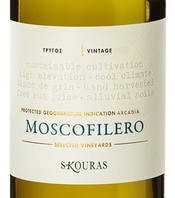 Moscofilero is a wonderfully interesting grape. Pink or grey-skinned, like Pinot Grigio, it usually makes a floral white wine. The aromatics make you think it will be sweet, but it’s not, which is part of the reason it is a joy to drink. … Read more
Moscofilero is a wonderfully interesting grape. Pink or grey-skinned, like Pinot Grigio, it usually makes a floral white wine. The aromatics make you think it will be sweet, but it’s not, which is part of the reason it is a joy to drink. … Read more
All posts by admin
Mount Langi Ghiran, Grampians (Victoria, Australia) Riesling 2023
($23): 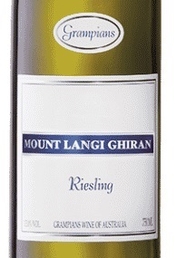 Mount Langi Ghiran, best known for their array of stunning Shiraz wines, makes an equally compelling Riesling. I know, isn’t Australia too hot for Riesling? Much of the country is, but Mount Langi Ghiran’s location in the cool Grampians district of Victoria is ideal for that grape — and of course, given their reputation, for Shiraz. … Read more
Mount Langi Ghiran, best known for their array of stunning Shiraz wines, makes an equally compelling Riesling. I know, isn’t Australia too hot for Riesling? Much of the country is, but Mount Langi Ghiran’s location in the cool Grampians district of Victoria is ideal for that grape — and of course, given their reputation, for Shiraz. … Read more
Lieb Cellars, North Fork of Long Island (New York) Pinot Blanc Estate 2022
($23): 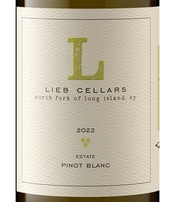 What a surprise! Pinot Blanc can often be dilute and uninspired. Not this one from Lieb Cellars, one of Long Island’s top producers. Yes, Long Island makes wine and very good wine at that, as evidenced by this Pinot Blanc. … Read more
What a surprise! Pinot Blanc can often be dilute and uninspired. Not this one from Lieb Cellars, one of Long Island’s top producers. Yes, Long Island makes wine and very good wine at that, as evidenced by this Pinot Blanc. … Read more
Raventós i Blanc, Conca del Riu Anoia (Penedes, Spain) “De Nit” Sparkling Rosé 2021
($25): 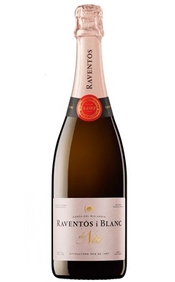 Raventós i Blanc, one of Spain’s leading producers of sparkling wines, left the Cava consortium because they felt the standards were too low. So, instead of bottling their excellent sparkling wines as Cava, they label them Conca del Riu Anoia, a new D.O. … Read more
Raventós i Blanc, one of Spain’s leading producers of sparkling wines, left the Cava consortium because they felt the standards were too low. So, instead of bottling their excellent sparkling wines as Cava, they label them Conca del Riu Anoia, a new D.O. … Read more
Domaine Jean-Baptiste Ponsot, Rully 1er Cru (Burgundy, France) Molesme 2021
($65): 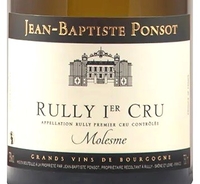 Jean-Baptiste Ponsot, grandson of the founder of the estate, took it over in 2000 when he was just 20 years old. My first and only experience with their wines — it certainly will not be my last — was at a tiny restaurant in Cluny, in southern Burgundy. … Read more
Jean-Baptiste Ponsot, grandson of the founder of the estate, took it over in 2000 when he was just 20 years old. My first and only experience with their wines — it certainly will not be my last — was at a tiny restaurant in Cluny, in southern Burgundy. … Read more
Domaine Yvon and Laurent Vocoret, Chablis 1er Cru (Burgundy, France) Fourchaume 2021
($45): 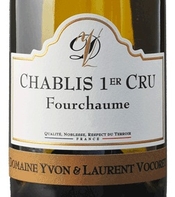 Though the crop was small in Burgundy and especially Chablis in 2021 because of severe frost, the wines, like this delight, can be excellent. Fourchaume, one of the top premier cru vineyards of Chablis, abuts the line of Grand Cru vineyards, which perhaps explains its stature. … Read more
Though the crop was small in Burgundy and especially Chablis in 2021 because of severe frost, the wines, like this delight, can be excellent. Fourchaume, one of the top premier cru vineyards of Chablis, abuts the line of Grand Cru vineyards, which perhaps explains its stature. … Read more
Domaine Jean-Marc Brocard, Chablis (Burgundy, France) “V. V. 46” 2022
($37): 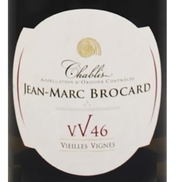 The back label tells us the wine made from vines planted in 1946 is a tribute to Jean-Marc’s “spiritual” father, Louis Petit, “who taught him how to make the soil speak.” With more weight and density, it is a fabulous contrast to Brocard’s Vieilles Vignes de Sainte Claire, showing the impact of vine age. … Read more
The back label tells us the wine made from vines planted in 1946 is a tribute to Jean-Marc’s “spiritual” father, Louis Petit, “who taught him how to make the soil speak.” With more weight and density, it is a fabulous contrast to Brocard’s Vieilles Vignes de Sainte Claire, showing the impact of vine age. … Read more
Domaine Jean-Marc Brocard, Chablis (Burgundy, France) “Vieilles Vignes de Sainte Claire” 2022
($28): 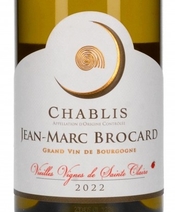 Chablis remains one bright spot in Burgundy for consumers because its wines remain underpriced, and a great value compared to those from the Côte d’Or. What they may lack it opulence compared to New World Chardonnay or the Chardonnay-based wines from the Côte d’Or, they make up for with a riveting minerality and focus. … Read more
Chablis remains one bright spot in Burgundy for consumers because its wines remain underpriced, and a great value compared to those from the Côte d’Or. What they may lack it opulence compared to New World Chardonnay or the Chardonnay-based wines from the Côte d’Or, they make up for with a riveting minerality and focus. … Read more
Domaine Michel Bouzereau et Fils, Bourgogne Côte d’Or (Burgundy, France) Chardonnay 2022
($37, Jeanne-Marie de Champs): 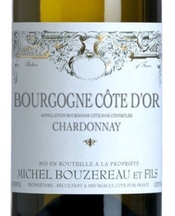 Jean-Baptiste Bouzereau now runs this stellar domaine based in Meursault. Bouzereau has used the new appellation, Bourgogne Côte d’Or, which indicates that all the grapes came from the Côte d’Or, the heart of Burgundy, as opposed to anywhere else in the region. … Read more
Jean-Baptiste Bouzereau now runs this stellar domaine based in Meursault. Bouzereau has used the new appellation, Bourgogne Côte d’Or, which indicates that all the grapes came from the Côte d’Or, the heart of Burgundy, as opposed to anywhere else in the region. … Read more
Jacques Parent et Cie, Monthelie 1er Cru (Burgundy, France) Les Champs Fulliot 2022
($65, Jeanne-Marie de Champs): 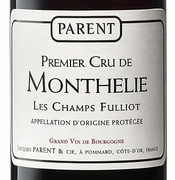 Alongside Domaine Parent, run by Anne Parent and her sister Catherine, is a small négociant business, called Jacques Parent et Cie. The domaine is known best for their masterful array of Pommard that reflect the diversity and beauty of the appellation’s vineyards. … Read more
Alongside Domaine Parent, run by Anne Parent and her sister Catherine, is a small négociant business, called Jacques Parent et Cie. The domaine is known best for their masterful array of Pommard that reflect the diversity and beauty of the appellation’s vineyards. … Read more
Château de Raousset, Chiroubles (Beaujolais, Burgundy, France) “Bel-Air” 2022
($29, Jeanne-Marie de Champs): 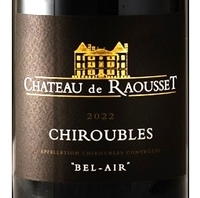 Though Chiroubles, one of the ten Crus (named villages) of Beaujolais borders Fleurie, the wines are vastly different, which is what makes drinking wines from the Beaujolais Crus so fascinating. Château de Raousset, one of the region’s top producers, makes both. … Read more
Though Chiroubles, one of the ten Crus (named villages) of Beaujolais borders Fleurie, the wines are vastly different, which is what makes drinking wines from the Beaujolais Crus so fascinating. Château de Raousset, one of the region’s top producers, makes both. … Read more
Tenuta La Massa, Toscana IGT (Tuscany, Italy) “La Massa” 2020
($27): 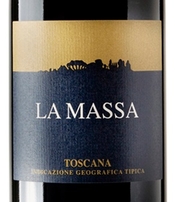 Giampaolo Motta acquired the 67-acre estate located in the Conca d’Oro in Panzano, the heart of Chianti Classico. Instead of making Chianti Classico, he opted to blend traditional Bordeaux grapes with the native Sangiovese. Some would call his wines Super Tuscan. … Read more
Giampaolo Motta acquired the 67-acre estate located in the Conca d’Oro in Panzano, the heart of Chianti Classico. Instead of making Chianti Classico, he opted to blend traditional Bordeaux grapes with the native Sangiovese. Some would call his wines Super Tuscan. … Read more
Tenuta Luce, Toscana IGT (Tuscany, Italy) “Luce” 2019
($121): 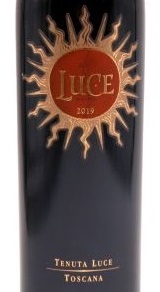 Tenuta Luce, originally a joint venture between wine icons Robert Mondavi and Vittorio Frescobaldi, is now solely owned by the Frescobaldi family. Located in Montalcino and though it does make a Brunello, Tenuta Luce is distinct from Castelgiocondo, another Frescobaldi estate. … Read more
Tenuta Luce, originally a joint venture between wine icons Robert Mondavi and Vittorio Frescobaldi, is now solely owned by the Frescobaldi family. Located in Montalcino and though it does make a Brunello, Tenuta Luce is distinct from Castelgiocondo, another Frescobaldi estate. … Read more
Tenuta La Massa, Toscana IGT (Tuscany, Italy) “Giorgio Primo” 2019
($111): 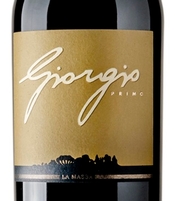 Giampaolo Motta named this flagship wine after his grandfather and son. With more structure and less flesh that the 2020 La Massa, the stellar 2019 Grigio Primo needs considerably more time in the bottle for its true grandeur to show. … Read more
Giampaolo Motta named this flagship wine after his grandfather and son. With more structure and less flesh that the 2020 La Massa, the stellar 2019 Grigio Primo needs considerably more time in the bottle for its true grandeur to show. … Read more
Tenuta Calimaia, Vino Nobile di Montepulciano (Tuscany, Italy) 2020
($20): 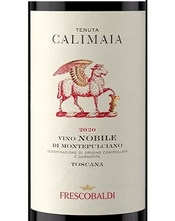 Frescobaldi, a name synonymous with quality in Tuscany, has established this estate in Montepulciano. It’s really a return to Montepulciano for them since Leonardo Di Niccolò Frescobaldi was the town’s mayor in 1390. The exquisite 2020, their second vintage, is, in a word, gorgeous, melding black fruit that borders on tarriness with minerals. … Read more
Frescobaldi, a name synonymous with quality in Tuscany, has established this estate in Montepulciano. It’s really a return to Montepulciano for them since Leonardo Di Niccolò Frescobaldi was the town’s mayor in 1390. The exquisite 2020, their second vintage, is, in a word, gorgeous, melding black fruit that borders on tarriness with minerals. … Read more
San Felice, Toscana (Tuscany, Italy) Pugnitello 2020
($46, Total Beverage Solution): 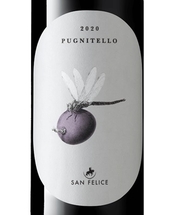 Pugnitello, a grape whose name means “little fist” based on the appearance of the bunches, is a relative newcomer to Italian wine, having been studied and developed by San Felice in the 1980s. So, it is not surprising that their rendition should be outstanding. … Read more
Pugnitello, a grape whose name means “little fist” based on the appearance of the bunches, is a relative newcomer to Italian wine, having been studied and developed by San Felice in the 1980s. So, it is not surprising that their rendition should be outstanding. … Read more
Produttori Vini Manduria, Primitivo di Manduria Riserva DOC (Puglia, Italy) “Elegia” 2019
($22): 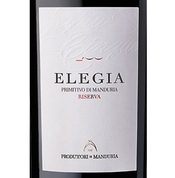 A massive bottle plus a 15 percent stated-alcohol accurately predicts the style of the wine before you pull the cork. Mild and suave tannins lend needed support to the fruity richness. The level of alcohol and the ripe dark fruit quality explains a hint of sweetness in the finish. … Read more
A massive bottle plus a 15 percent stated-alcohol accurately predicts the style of the wine before you pull the cork. Mild and suave tannins lend needed support to the fruity richness. The level of alcohol and the ripe dark fruit quality explains a hint of sweetness in the finish. … Read more
Domaine de L’Amandine, Côtes du Rhône Villages Séguret (Rhône Valley, France) 2021
($17, The Wine Trust): 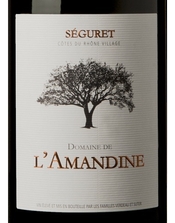 Séguret, a beautifully perched village in the southern Rhône valley, is one of 22 villages allowed to add their name to the Côtes du Rhône Villages appellation. Rhône authority Matt Walls, refers to them as a “training camp before being elevated to Cru status.” … Read more
Séguret, a beautifully perched village in the southern Rhône valley, is one of 22 villages allowed to add their name to the Côtes du Rhône Villages appellation. Rhône authority Matt Walls, refers to them as a “training camp before being elevated to Cru status.” … Read more
Gravity Exists in Burgundy
In recent memory, prices for Burgundy have seemed to defy gravity—they always rise. The prices at this year’s recently completed Hospices de Beaune auction, the 163rd, actually fell, demonstrating that gravity does exist there. The average price per barrel was €30,839 ($33,642), down 14 percent compared to 2022, but consumers may not notice any difference anytime soon because of the complexity of the market.… Read more
Remembering Mike Grgich: The Man Who Put California Wines on the Map
The wine world lost a giant last month. Miljenko “Mike” Grgich, the man who thrust California wine onto the world’s stage, died at age 100 at his home in Calistoga in the Napa Valley.
Grgich, more than anyone, is responsible for California’s reputation as a place that could make great wine when his 1973 Chateau Montelena Chardonnay took first place at a wine competition that pitted France’s best white Burgundies against upstarts from California. … Read more
My Year in Review: 2023
Choosing the best of 2023 is easy for me—the marriage of both our daughters to men we like and admire. Of course, wine played a role in the numerous celebrations that accompanied the weddings. We uncorked and drank many birth year wines, 1988 and 1992, that I had purchased soon after the kids were born, which reminded me of important lessons that I’d like to pass on.… Read more
Biondi-Santi, Rosso di Montalcino (Tuscany, Italy) 2020
($89, Wilson Daniels): 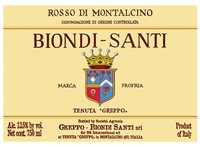 The label says Rosso, but the wine says Brunello. That’s Biondi-Santi for you. Firm, sleek and minerally, this mid-weight Rosso has more elegance and stature than many producers’ bottlings of Brunello. Fine tannins surround tightly coiled power and exquisite austerity. … Read more
The label says Rosso, but the wine says Brunello. That’s Biondi-Santi for you. Firm, sleek and minerally, this mid-weight Rosso has more elegance and stature than many producers’ bottlings of Brunello. Fine tannins surround tightly coiled power and exquisite austerity. … Read more
Case Alte, Sicilia DOC (Sicily, Italy) Nero d’Avola “16 Filari” 2020
($35): 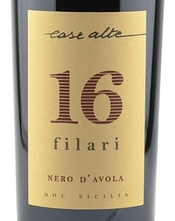 Nero d’Avola, a grape indigenous to Sicily, makes a wide wine across a wide gamut of styles. The muscular 16 Filari, from Case Alte, lies towards the massive side of the spectrum — sort of a Nero d’Avola on steroids. … Read more
Nero d’Avola, a grape indigenous to Sicily, makes a wide wine across a wide gamut of styles. The muscular 16 Filari, from Case Alte, lies towards the massive side of the spectrum — sort of a Nero d’Avola on steroids. … Read more
Château Lagrange : From A Diamond in the Rough to A Sparkling Gem
It’s amazing what money and dedication to a goal can do. Suntory, the Japanese multinational brewing and distilling company, purchased the neglected and run-down Château Lagrange (an estate classified as a Third Growth in the famed Médoc Classification of 1855) in 1983 for a reported 10 million U.S.… Read more
Alex Foillard, Brouilly (Beaujolais, Burgundy, France) 2021
($47, Kermit Lynch): 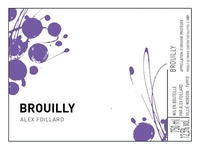 First, the backstory. At a Paris bistro, I ordered a glass of 2021 Côte de Brouilly, from Thivin, one of the best producers of that cru. Out came a glass of red wine, which was alluring, mineral-y and dense, and every bit as good as I had expected. … Read more
First, the backstory. At a Paris bistro, I ordered a glass of 2021 Côte de Brouilly, from Thivin, one of the best producers of that cru. Out came a glass of red wine, which was alluring, mineral-y and dense, and every bit as good as I had expected. … Read more
Leyda, Valle de Leyda (Chile) Pinot Noir Costal Vineyards — Las Brisas 2020
($20, Park Street Imports): 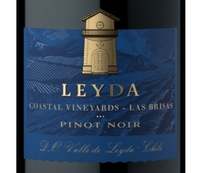 Lying about 50 miles west of Santiago, the Leyda Valley sits on the cool Pacific coast, which explains, in part, why this Pinot Noir is so engaging. Restrained, not overblown or over-ripe, this mid-weight red delivers a harmonious mix of savory and leafy notes intermixed with red fruit ones. … Read more
Lying about 50 miles west of Santiago, the Leyda Valley sits on the cool Pacific coast, which explains, in part, why this Pinot Noir is so engaging. Restrained, not overblown or over-ripe, this mid-weight red delivers a harmonious mix of savory and leafy notes intermixed with red fruit ones. … Read more
From Decanter Magazine: Domaine des Baumard’s Quarts de Chaume: World-class sweet wines

You can be forgiven if you are unfamiliar with the Quarts de Chaume appellation. After all, when I mentioned to a well-known wine-writer colleague based in San Francisco that I was writing about it, he said, ‘What’s that?’
The appellation should be on every wine lover ’s radar, because it’s home to one of the world’s greatest sweet wines.… Read more
Domaine Mont Bessay, Moulin-à-Vent (Beaujolais, Burgundy, France) Le Vieux Bourg 2021
($50, Misa Imports): 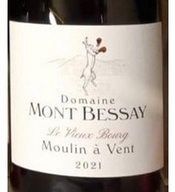 Domaine Mont Bessay is a new project from the people who make the beautifully textured wines at Domaine du Cellier aux Moines in Givry. Just as Philippe Pascal and Guillaume Marko are drawing attention to Givry in the Côte Chalonnaise — not to be confused with Gevrey in the Côte d’Or — they will make the world think differently about Beaujolais cru wines. … Read more
Domaine Mont Bessay is a new project from the people who make the beautifully textured wines at Domaine du Cellier aux Moines in Givry. Just as Philippe Pascal and Guillaume Marko are drawing attention to Givry in the Côte Chalonnaise — not to be confused with Gevrey in the Côte d’Or — they will make the world think differently about Beaujolais cru wines. … Read more
Gilles Copéret, Morgon (Beaujolais, Burgundy, France) 2021
($21, Monsièur Touton Selection): 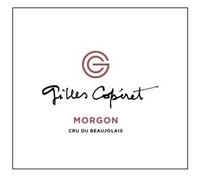 The wines from Morgon, another of the ten named villages of Beaujolais, tend to be firm, rather that fleshy. With its chiseled profile, this long and lively one from Copéret fits that mold. A savory accent of subtle smokiness complements its engaging austerity. … Read more
The wines from Morgon, another of the ten named villages of Beaujolais, tend to be firm, rather that fleshy. With its chiseled profile, this long and lively one from Copéret fits that mold. A savory accent of subtle smokiness complements its engaging austerity. … Read more
Domaine Mont Bessay, Juliénas (Beaujolais, Burgundy, France) “En Bessay” 2021
($50, Misa Imports): 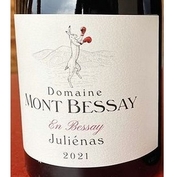 Wines from this new estate have the potential to put Juliénas on the same level as Morgon and Moulin-à-Vent when speaking of the Beaujolais cru. The stunning 2021 En Bessay delivers as explosive array of red fruit and spicy flavors, seamlessly woven together. … Read more
Wines from this new estate have the potential to put Juliénas on the same level as Morgon and Moulin-à-Vent when speaking of the Beaujolais cru. The stunning 2021 En Bessay delivers as explosive array of red fruit and spicy flavors, seamlessly woven together. … Read more
Three Sticks, Sonoma Coast (Sonoma County, California) Pinot Noir Gap’s Crown Vineyard 2021
($75): 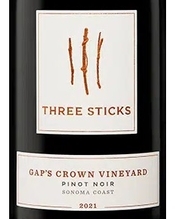 The Sonoma Coast (especially the part of the Sonoma Coast AVA that is west and elevated) is known for cooler temperatures that produce restrained, tensile Pinot Noirs, like this one. Bright and brimming with red cherry-like flavors, this fruit-driven, pristine Pinot Noir has good depth without being heavy. … Read more
The Sonoma Coast (especially the part of the Sonoma Coast AVA that is west and elevated) is known for cooler temperatures that produce restrained, tensile Pinot Noirs, like this one. Bright and brimming with red cherry-like flavors, this fruit-driven, pristine Pinot Noir has good depth without being heavy. … Read more
Domaine des Bruyeres, Domaine des Bruyeres (Beaujolais, Burgundy, France) 2020
($22, Peter Weygandt Selection): 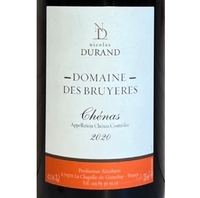 Chénas, the smallest of the ten named villages of Beaujolais, typically produces dark wines, like this one, that combine minerality and fruitiness. This Chénas from Peter Weygandt, always a reliable name on a back label, displays a charming beefiness balanced by fine, not hard, tannins. … Read more
Chénas, the smallest of the ten named villages of Beaujolais, typically produces dark wines, like this one, that combine minerality and fruitiness. This Chénas from Peter Weygandt, always a reliable name on a back label, displays a charming beefiness balanced by fine, not hard, tannins. … Read more
Domaine Perroud, Brouilly (Beaujolais, Burgundy, France) L’Enfer des Balloquets 2020
($23): 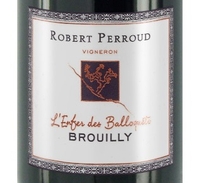 The wines from Brouilly, the largest of the ten named villages of Beaujolais, typically provide more interest that a straight Beaujolais-Villages. This one supports that generalization. Fine acidity and a hint of tannic structure balances this ripe and generous Brouilly. … Read more
The wines from Brouilly, the largest of the ten named villages of Beaujolais, typically provide more interest that a straight Beaujolais-Villages. This one supports that generalization. Fine acidity and a hint of tannic structure balances this ripe and generous Brouilly. … Read more
Terroir is Alive and Well on Mount Etna
Tenuta Perano, Chianti Classico Riserva (Tuscany, Italy) 2018
($33): 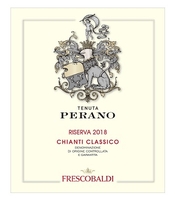 Frescobaldi, the iconic Tuscan producer whose homebase is Chianti Rùfina, has recently expanded into Chianti Classico with their Perano estate. Just as they make exceptional wine in Rùfina, they have done the same at Perano. As expected from a Riserva, their 2018 has more weight and depth than their straight Chianti Classico. … Read more
Frescobaldi, the iconic Tuscan producer whose homebase is Chianti Rùfina, has recently expanded into Chianti Classico with their Perano estate. Just as they make exceptional wine in Rùfina, they have done the same at Perano. As expected from a Riserva, their 2018 has more weight and depth than their straight Chianti Classico. … Read more
Tenuta Perano, Chianti Classico Gran Selezione (Tuscany, Italy) Rialzi 2018
($52): 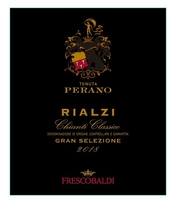 Grapes for a Gran Selezione bottling, which sits above Riserva at the pinnacle of the Chianti Classico quality pyramid, must come the estate’s own property — no purchased grapes allowed. Perano’s comes from a single vineyard, Rialzi, located at about 500 meters above sea level, which is a real advantage in these days of climate change. … Read more
Grapes for a Gran Selezione bottling, which sits above Riserva at the pinnacle of the Chianti Classico quality pyramid, must come the estate’s own property — no purchased grapes allowed. Perano’s comes from a single vineyard, Rialzi, located at about 500 meters above sea level, which is a real advantage in these days of climate change. … Read more
Tenuta dell’Ornellaia, Toscana IGT (Tuscany, Italy) “Le Volte dell’Ornellaia” 2021
($33, Vintus): 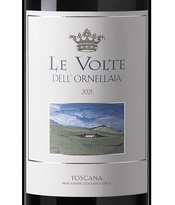 Sometimes described as the “third” wine of Ornellaia, Le Volte is and it isn’t because it addition to estate wine that did not make it into either Ornellaia or Le Serre Nuove dell’Ornellaia, Le Volte contains grapes that have been purchased from other sources. … Read more
Sometimes described as the “third” wine of Ornellaia, Le Volte is and it isn’t because it addition to estate wine that did not make it into either Ornellaia or Le Serre Nuove dell’Ornellaia, Le Volte contains grapes that have been purchased from other sources. … Read more
Tenuta Perano, Chianti Classico Riserva (Tuscany, Italy) 2018
($33):  Frescobaldi, the iconic Tuscan producer whose homebase is Chianti Rùfina, has recently expanded into Chianti Classico with their Perano estate. Just as they make exceptional wine in Rùfina, they have done the same at Perano. As expected from a Riserva, their 2018 has more weight and depth than their straight Chianti Classico. … Read more
Frescobaldi, the iconic Tuscan producer whose homebase is Chianti Rùfina, has recently expanded into Chianti Classico with their Perano estate. Just as they make exceptional wine in Rùfina, they have done the same at Perano. As expected from a Riserva, their 2018 has more weight and depth than their straight Chianti Classico. … Read more
Tenuta Perano, Chianti Classico Gran Selezione (Tuscany, Italy) Rialzi 2018
($52):  Grapes for a Gran Selezione bottling, which sits above Riserva at the pinnacle of the Chianti Classico quality pyramid, must come the estate’s own property — no purchased grapes allowed. Perano’s comes from a single vineyard, Rialzi, located at about 500 meters above sea level, which is a real advantage in these days of climate change. … Read more
Grapes for a Gran Selezione bottling, which sits above Riserva at the pinnacle of the Chianti Classico quality pyramid, must come the estate’s own property — no purchased grapes allowed. Perano’s comes from a single vineyard, Rialzi, located at about 500 meters above sea level, which is a real advantage in these days of climate change. … Read more
Maison Guillot-Broux, Mâcon Rouge (Burgundy, France) 2019
($23, Vintus): 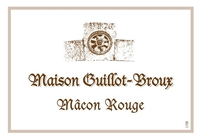 Domaine Guillot-Broux makes exceptional red wines from what most people consider an unexceptional place for them, the Mâconnais. Sure, the Mâconnais is home to a slew of terrific, and well-priced, whites. But reds? It’s not the first, or even the fourth, place people think of for reds. … Read more
Domaine Guillot-Broux makes exceptional red wines from what most people consider an unexceptional place for them, the Mâconnais. Sure, the Mâconnais is home to a slew of terrific, and well-priced, whites. But reds? It’s not the first, or even the fourth, place people think of for reds. … Read more
Domaine Guillot-Broux, Bourgogne Rouge (Burgundy, France) “Les Genièvrières” 2020
($46, Vintus): 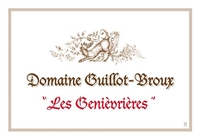 This stunning Bourgogne Rouge will change your mind about the quality of red wines coming from the Mâconnais. Firstly, Domaine Guillot-Broux is clearly a talented and detail-oriented producer. They waited 18 years before making a wine from Les Genièvrières, a vineyard in Cruzille, a village not far from the Abbaye de Cluny, because they didn’t think the vines were old enough to produce high-quality wine! … Read more
This stunning Bourgogne Rouge will change your mind about the quality of red wines coming from the Mâconnais. Firstly, Domaine Guillot-Broux is clearly a talented and detail-oriented producer. They waited 18 years before making a wine from Les Genièvrières, a vineyard in Cruzille, a village not far from the Abbaye de Cluny, because they didn’t think the vines were old enough to produce high-quality wine! … Read more
Château Boutisse, Saint-Émilion Grand Cru (Bordeaux, France) 2019
($41, Vintus): 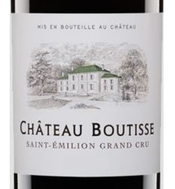 Usually when you see “Grand Cru” on a label it represents a higher level in a classification or stratification of a region. Not so in Saint-Émilion where it is an appellation, not an indicator of quality. The appellations of Saint-Émilion and Saint-Émilion Grand Cru are identical geographically. … Read more
Usually when you see “Grand Cru” on a label it represents a higher level in a classification or stratification of a region. Not so in Saint-Émilion where it is an appellation, not an indicator of quality. The appellations of Saint-Émilion and Saint-Émilion Grand Cru are identical geographically. … Read more
Tenuta dell’Ornellaia, Toscana IGT (Tuscany, Italy) “Poggio alle Gazze” 2021
($73, Vintus):  Sauvignon Blanc was among the initial plantings at Ornellaia and initially they made a wine exclusively from that variety. Over time, Viognier, Vermentino, and Verdicchio have been added and now the current blend includes those four in proportions that vary from year to year depending on the weather. … Read more
Sauvignon Blanc was among the initial plantings at Ornellaia and initially they made a wine exclusively from that variety. Over time, Viognier, Vermentino, and Verdicchio have been added and now the current blend includes those four in proportions that vary from year to year depending on the weather. … Read more
E. Guigal, Saint-Joseph (Rhône Valley, France) 2019
($38, Vintus):  Guigal now owns prized vineyards in Saint Joseph and makes highly acclaimed wines from them, much as they do in Côte Rôtie. The grapes for this juicy bottling come from their own vineyards plus ones they buy from other growers. … Read more
Guigal now owns prized vineyards in Saint Joseph and makes highly acclaimed wines from them, much as they do in Côte Rôtie. The grapes for this juicy bottling come from their own vineyards plus ones they buy from other growers. … Read more
E. Guigal, Côtes du Rhône (Rhône Valley, France) 2020
($18, Vintus):  Guigal’s single vineyard wines from the Côte Rôtie, La Mouline, La Landonne, and La Turque, which sell for hundreds of dollars upon release and are highly allocated, bring fame to that firm. In my mind, what makes Guigal a famed producer is this wine, their consistently excellent and well-priced Côtes du Rhône. … Read more
Guigal’s single vineyard wines from the Côte Rôtie, La Mouline, La Landonne, and La Turque, which sell for hundreds of dollars upon release and are highly allocated, bring fame to that firm. In my mind, what makes Guigal a famed producer is this wine, their consistently excellent and well-priced Côtes du Rhône. … Read more
E. Guigal, Côte Rôtie (Rhône Valley, France) “Brune et Blonde de Guigal” 2019
($91, Vintus):  Côte Rôtie, or “roasted slope” transliterated into English, is composed of two major subdivisions, the Côte Brune and the Côte Blonde. Typically, the former imparts more power to the Syrah grown there because of the iron rich soil, while the latter is home to Syrah with more finesse, reflecting its limestone soil. … Read more
Côte Rôtie, or “roasted slope” transliterated into English, is composed of two major subdivisions, the Côte Brune and the Côte Blonde. Typically, the former imparts more power to the Syrah grown there because of the iron rich soil, while the latter is home to Syrah with more finesse, reflecting its limestone soil. … Read more
Château Tour Bayard, Montagne-Saint-Émillion (Bordeaux, France) 2019
($24, Vintus):  Consumers often overlook Bordeaux because of an image that the wines are rarified, expensive, and need considerable aging. That criticism may apply to the top few properties, but trust me, there are scores of estates that make well-priced wines that are ready to drink now, like this one. … Read more
Consumers often overlook Bordeaux because of an image that the wines are rarified, expensive, and need considerable aging. That criticism may apply to the top few properties, but trust me, there are scores of estates that make well-priced wines that are ready to drink now, like this one. … Read more
Château Recougne, Bordeaux Supérieur (France) 2019
($17, Vintus):  Château Recougne consistently displays the quintessential Bordeaux profile of fruit and what I like to call, “not just fruit” character. This refined mid-weight wine entices with a subtle combination of red fruits, a dash of riper black fruit, and spice, not sheer power. … Read more
Château Recougne consistently displays the quintessential Bordeaux profile of fruit and what I like to call, “not just fruit” character. This refined mid-weight wine entices with a subtle combination of red fruits, a dash of riper black fruit, and spice, not sheer power. … Read more
Object Lesson in Excellence: E. Guigal’s Côte-Rôtie “Château d’Ampuis” 2019
The Guigal family, the elder Marcel and his wife Bernadette, and their son Philippe and his wife Eve, have always focused on site specificity in the great Northern Rhône appellation of Côte-Rôtie. It started in 1966 when they bottled wine separately from La Mouline, a 2.5-acre vineyard planted with both Syrah and Viognier, in an amphitheater on the Côte Blonde slope of the appellation. … Read more
G. B. Burlotto, Langhe DOC (Piedmont, Italy) Freisa 2020
($30, Vineyard Road, Inc):  Freisa, a grape related to Nebbiolo, typically has a significant tannin structure, much like Nebbiolo. Just as there are many examples of Langhe Nebbiolo that are approachable when young, here is a seductive Friesa Langhe DOC that is delightful to drink now. … Read more
Freisa, a grape related to Nebbiolo, typically has a significant tannin structure, much like Nebbiolo. Just as there are many examples of Langhe Nebbiolo that are approachable when young, here is a seductive Friesa Langhe DOC that is delightful to drink now. … Read more
